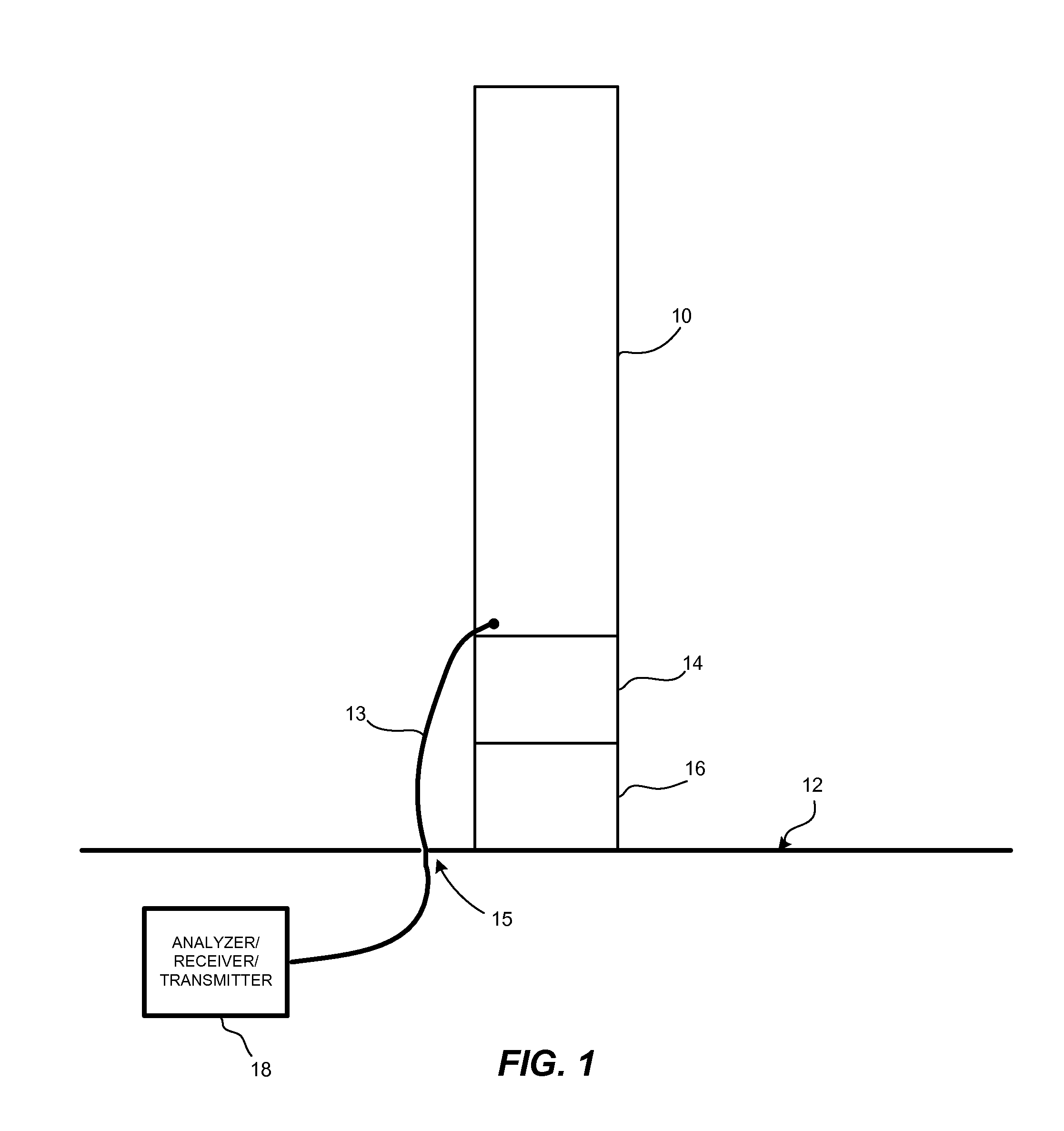Conversion of an antenna to multiband using current probes
a multi-band, current probe technology, applied in the field of communication systems, can solve the problems of limiting the number of additional antennas, the risk of existing capabilities being compromised, and the limited area available on the roof of buildings, which often serve as antenna placement locations, so as to improve the voltage standing wave ratio and increase the frequency capability
- Summary
- Abstract
- Description
- Claims
- Application Information
AI Technical Summary
Benefits of technology
Problems solved by technology
Method used
Image
Examples
Embodiment Construction
[0026]Due to limited real estate on deployment platforms, ships being an excellent example, collocated antenna systems are susceptible to electromagnetic interference to and from other antennas. Also, to be able to integrate additional antennas into these systems, antenna-to-antenna isolation must be managed to avoid the overloading of the RF front end stage of receivers. Typically with a shared antenna, a power divider can be attached to the antenna output port, causing the signal to be split between the various receivers (and / or transmitters). However, a power divider reduces the signal strength by as much as 3 dB or to the half power equivalent. For weak signals or for multi-split signals, this can result in signals that are below the detection threshold for the receiver.
[0027]There is a need to devise a way to convey signals from antennas without incurring the loss associated with a power divider, and also be able to modify existing antennas to have multiband capabilities. Magne...
PUM
 Login to View More
Login to View More Abstract
Description
Claims
Application Information
 Login to View More
Login to View More - R&D
- Intellectual Property
- Life Sciences
- Materials
- Tech Scout
- Unparalleled Data Quality
- Higher Quality Content
- 60% Fewer Hallucinations
Browse by: Latest US Patents, China's latest patents, Technical Efficacy Thesaurus, Application Domain, Technology Topic, Popular Technical Reports.
© 2025 PatSnap. All rights reserved.Legal|Privacy policy|Modern Slavery Act Transparency Statement|Sitemap|About US| Contact US: help@patsnap.com



